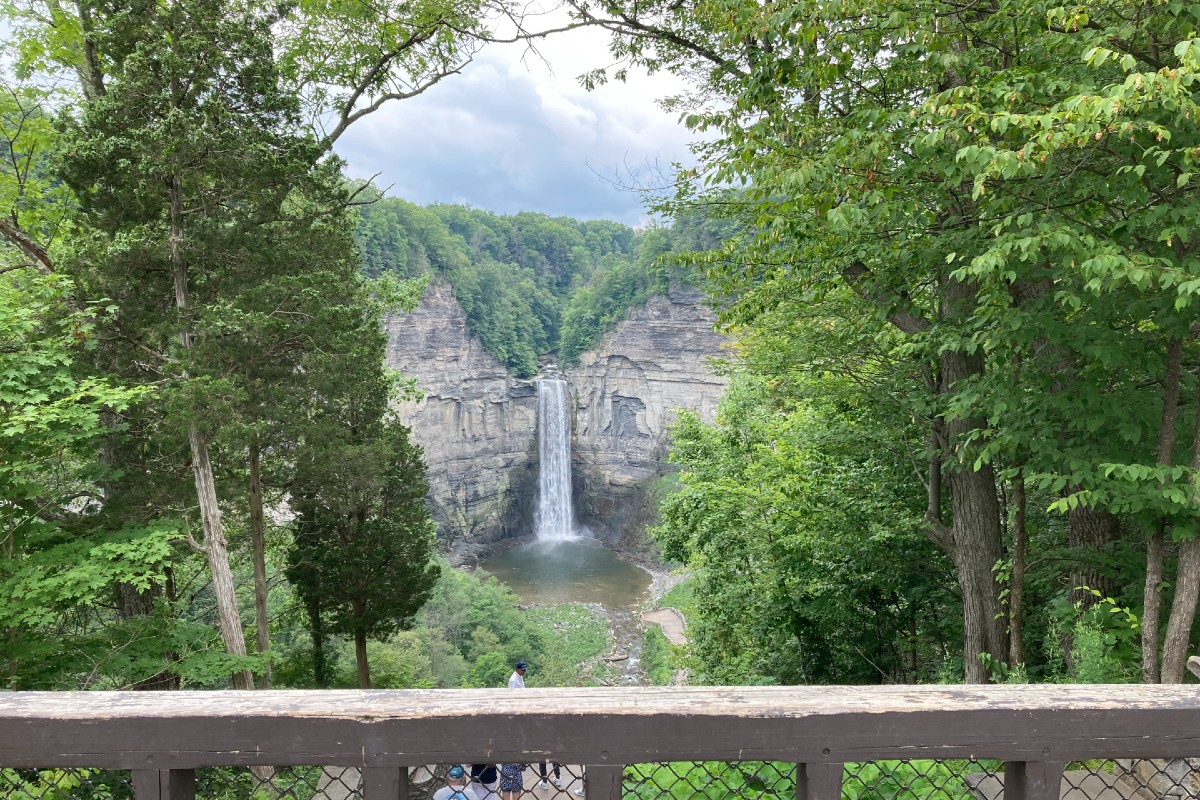By Elliott Brack
Editor and Publisher, GwinnettForum
JULY 18, 2023 | Last week was our first trip to the Finger Lakes region of New York, a scenic area of lakes, waterfalls, outdoor recreation, wineries galore, and lots of farming and treed hills. Though some harsh rains poured on eastern New York earlier, our week saw nice days.
![]() The entire northern tier of New York was primarily settled after the Erie Canal was finished in 1825, all the way 363 miles from near Albany (really Waterford) on the east, to Buffalo on the west (ending at Tonawanda) and made Buffalo at one time the 10th largest city in the USA. It was four feet deep and 40 feet wide. The project was foresightedly funded by the New York Legislature, with the construction taking eight years and costing $7 million. A widening of the canal in 1835 cost four times as much as the original construction!
The entire northern tier of New York was primarily settled after the Erie Canal was finished in 1825, all the way 363 miles from near Albany (really Waterford) on the east, to Buffalo on the west (ending at Tonawanda) and made Buffalo at one time the 10th largest city in the USA. It was four feet deep and 40 feet wide. The project was foresightedly funded by the New York Legislature, with the construction taking eight years and costing $7 million. A widening of the canal in 1835 cost four times as much as the original construction!
There are 11 Finger Lakes, with the largest two, Seneca and Cayuga, 40 miles long, and 600 feet deep, and these two lakes connect to the Erie Canal. The Finger Lakes are dotted with vacation (and permanent) homes clustered around the lakes. Low mountains with deep gorges sprout numerous waterfalls.
The largest, Taughannock Falls, plunges 215 feet, more than Niagara. We lodged at the Inn at Taughannock, in business since 1873. It’s closed only in January, for refurbishing and repair. The views out toward Cayuga Lake are relaxing.
Our journey took us to Rochester, Seneca Falls, Geneva, Ithaca, Elmira, Corning, Watkins Glen and to Syracuse.
A highlight city is Ithaca, a town of about 30,000, home of Cornell University, Ithaca College and a community college. Altogether, the students add another 30,000 to the area population. The Cornell campus is like no other we have seen, not compact at all, but spread out on hills above the city amid many gorges, with several major stunning waterfalls nearby.
We were somewhat surprised at the amount of farming going on in the area. Hay and corn are primary crops. Hay is being mown now, with a second crop to be ready by fall. A major tourist attraction are the 130 wineries, plus cider producers and even a few distilleries, along the roads around the lakes. We didn’t see any one major winery, like you see in California. The Finger Lake wineries are all small operations, with the grapevines just starting to put on berries in mid-July.
The high point for me on the trip had to be realizing the heavy influence of the Erie Canal in the formative years of upper New York. Entire towns sprung up as the canal was built, with laborers only using primitive tools. The building of the canal also gave rise to the profession of the engineer, not seen as a job before the canal. Innovative individuals figured ways to clear land (and pull stumps mechanically), dig the canal and build 32 stone aqueducts (OVER rivers and gorges), develop a cement mixture that would cleave watertight huge blocks of stone together, and raise boats up and down the waterway through its 83 locks The canal was groundbreaking engineering, which had far-reaching results for the development of many industries for our country.
The canal upshot, moving cargo both ways, west to east, and east to west, reduced transportation cost immensely. What once cost $100 per ton to transport prior to the canal, afterward cost less than $10 a ton. Today the Erie Canal is mainly for recreational boating, though heavy cargoes can still ply the canal.
The Finger Lakes: well worth the scenic trip, and to understand the area’s history.
- Have a comment? Send to: elliott@brack.net











Follow Us